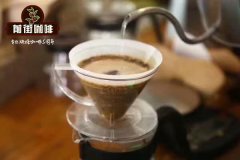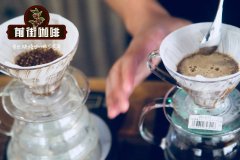Is Kenya Nigoo Coffee good? Kenya Ngugu Coffee processing Plant _ what kind of coffee is good in Kenya?

Professional coffee knowledge exchange more coffee bean information please follow the coffee workshop (Wechat official account cafe_style)
Ngugu- Kenya
The coffee is produced by many small farmers, all of whom are members of the Kibirigwi Farmers' Cooperative Association (FCS), located in Kirinyaga County, Kenya. The cooperative has nine wet mills (factories, as they are known in Kenya), each near the service, but in separate areas: Ragati, Ngugu (where the coffee is crushed), Mukangu, Kiangai, Kibingoti, Thunguri, Kianjege, Chewa and Kibirigwi factories. The cooperative is the second largest in Kirinyaga, with a total of more than 7300 members. The flagship factory is Ragati, which is still the largest in the group. Nguguini (sometimes spelled Ngugu) has about 1500 active members delivering cherries each year.
Kirinyaga is famous for its coffee, and Nguguini is located near Nyeri's famous coffee area. The credentials of the location are indisputable. It may not be surprising that Nguguini has its own great reputation as a special factory. They have won various awards for many years and are widely regarded as "a watch" when it comes to the best Kenyan new crop coffee.
In addition to the widely spread SL28 and SL34, this sector contains some Ruiru 11 (2% or less). Ruiru 11 is named resident in Ruiru, Kenya, where it was developed in 70s and released in 1986. Over the past decade, Ruiru 11 has been almost as ubiquitous as the SL variety because of its resistance to coffee berry disease and coffee leaf rust. Varieties have been backcrossed with SL28 and SL34 to ensure the quality of tall cups.
Farmers selectively select ripe, red cherries, and then are sent to the cooperative's wet mill on the same day. Cherries are hand-sorted before pulping, with damaged and ripe cherries separated from red, ripe lots. After pulping, the fermentation time of coffee is 16 to 24 hours. After fermentation, the coffee is washed and density graded in clean, fresh river water to remove all traces of mucus before being soaked and then delivered to a dry riser. The time on the drying table depends on the climate, ambient temperature and the total output being processed. Drying can be done from 7 to 15 days in total. When dry, parchment is repeatedly moved and sorted to remove any damaged or discolored beans, and in the hottest parts of the day to maintain even temperature.
Coffee farming in the region goes back to the 1950s, but many cooperative members rely on additional economic and agricultural activities for a living. In addition to producing coffee, most farmers in the region also produce macadamia nuts, corn and dairy products for sale in local markets and at their own tables.
Some of the problems faced by farmers are due to losses caused by pests and diseases as well as relatively high input costs. Due to the decline in production, many people can not afford to plant disease-resistant varieties and face the market pricing. Perhaps not surprisingly, many young people in the region have no future in continuing to cultivate coffee. This is a challenge for most people in Kenya, and cooperatives such as Kibirigwi must face it in the future.
Size classification of Kenyan coffee beans
AA, AB and other grades used to classify lots in Kenya are a display screen size only. They are not any sign of cup quality. In Kenya, the AA level is equivalent to 17 or 18 (17-hip 64-inch or 18-pound 64-inch) screen sizes used in other sources. AA grades usually require higher prices at auction, although this level is no sign of cup quality and AB many better cups from a better farm.
Variety / S
SL34: SL34 was created in the 1930s as a variation between bourbon and Typica. It is different from SL28 because it has bronze leaves. It is well known that SL34 is quite resistant to torrential rains at high altitudes and produces high-quality coffee with complex citrus acidity and heavy taste. SL28: mutations in bourbon and Typica, which were created by Scott Lab in the 1930s. It has copper leaves and its beans are broad. It is native to Kenya and is relatively low-yielding, but cup quality is highly sought after, with strong lemon acidity, great sweetness, balance and complexity. SL34: SL34 was created in the 1930s as a variation between bourbon and Typica. It is different from SL28 because it has bronze leaves. It is well known that SL34 is quite resistant to torrential rains at high altitudes and produces high-quality coffee with complex citrus acidity and heavy taste. SL28: mutations in bourbon and Typica, which were created by Scott Lab in the 1930s. It has copper leaves and its beans are broad. It is native to Kenya and is relatively low-yielding, but cup quality is highly sought after, with strong lemon acidity, great sweetness, balance and complexity.
The Ngugu factory is part of the Kibirigwi Cooperative Association, as well as eight additional washing stations: Ragati, Mukangu, Kiangai, Kibingoti, Thunguri, Kianjege, Chewa and Kibirigwi. Although the association is registered in the town of Karatina (part of Nyeri), the factory is actually located on the county line on the side of Ngugu and Kiania roads.
The factory has 1450 active members and more than 7200 small farmers in the whole society, making it the second largest cooperative in Kirinyaga County.
Their usual coffee production is about 150 tons per year, although production dropped sharply to about 95 mt in the last season, due to bad weather conditions affecting production across the country.
The cup tests the flavor:
Apricots, peaches, orange blossoms, honeysuckle. Delicate and sweet.
END
Important Notice :
前街咖啡 FrontStreet Coffee has moved to new addredd:
FrontStreet Coffee Address: 315,Donghua East Road,GuangZhou
Tel:020 38364473
- Prev

What brand of Kenyan AAA coffee tastes good? Kenyan Coffee Raw Bean processing process
Professional coffee knowledge exchange more coffee bean information please follow the coffee workshop (Wechat official account cafe_style) Kenya coffee beans are graded by particle size, such as AA is large particles, pb is very small round beans, but with eggs, taste good or bad is not simply depends on the size, (of course, if the difference in the particle size of a bag of beans is definitely not good), so the recommendation is
- Next

Introduction to the flavor characteristics of coffee beans in Starbucks Ken Ya win Zhuoxi Manor _ how to brew Kenyan coffee
Professional coffee knowledge exchange more coffee bean information please follow the coffee workshop (Wechat official account cafe_style) Starbucks Collection Coffee-Kenya Coffee Windrich Manor Starbucks Collection Coffee-Kenya Wyndrich Manor Father's Day afternoon, hand-made Starbucks collection coffee in the office, this bag of coffee was brought back from the Starbucks Coffee Journey Special Show, only 50 grams
Related
- Detailed explanation of Jadeite planting Land in Panamanian Jadeite Manor introduction to the grading system of Jadeite competitive bidding, Red bid, Green bid and Rose Summer
- Story of Coffee planting in Brenka region of Costa Rica Stonehenge Manor anaerobic heavy honey treatment of flavor mouth
- What's on the barrel of Blue Mountain Coffee beans?
- Can American coffee also pull flowers? How to use hot American style to pull out a good-looking pattern?
- Can you make a cold extract with coffee beans? What is the right proportion for cold-extracted coffee formula?
- Indonesian PWN Gold Mandrine Coffee Origin Features Flavor How to Chong? Mandolin coffee is American.
- A brief introduction to the flavor characteristics of Brazilian yellow bourbon coffee beans
- What is the effect of different water quality on the flavor of cold-extracted coffee? What kind of water is best for brewing coffee?
- Why do you think of Rose Summer whenever you mention Panamanian coffee?
- Introduction to the characteristics of authentic blue mountain coffee bean producing areas? What is the CIB Coffee Authority in Jamaica?

